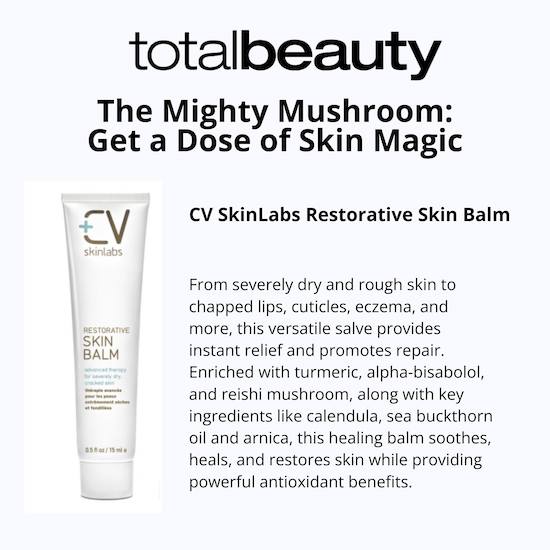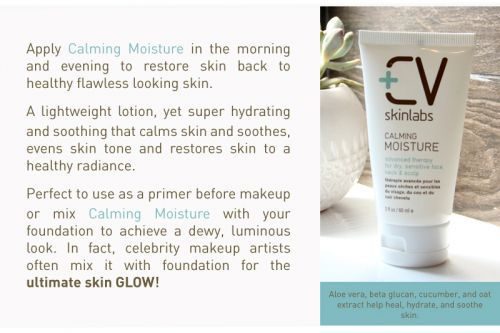Darker skin tones can struggle with unique challenges. If you have dark skin, you’re already aware of this.
You also know that a lot of the advice out there doesn’t quite apply to you.
Though things are changing, skin conversations often leave people with richly pigmented skin on the sidelines. That can leave you feeling confused or even dismissed when trying to treat your own unique skin issues.
You’re not imagining it—darker skin does behave differently sometimes. Though having extra melanin helps protect your skin from the sun, it can also respond to inflammation, irritation, and damage in unique ways.
Whether you’re dealing with dark spots, uneven tone, or extra-dry patches that don’t seem to budge, this post will help you understand what’s going on and how to soothe and support your skin.
Darker Skin Tones Issue 1: Dark Spots & Post-Inflammatory Hyperpigmentation (PIH)
One of the most common concerns among those with darker skin tones is hyperpigmentation. These are those persistent dark spots and splotches that seem to appear overnight but then take forever to fade.
Why it’s different in darker skin:
Melanin is the natural pigment of your skin. The more you have, the more your skin is vulnerable to post-inflammatory hyperpigmentation (PIH). That means that even after a minor scratch, pimple, or rash, your skin may darken in that area and take months or even years to fade.
How to manage it:
It’s best to avoid harsh chemicals or aggressive scrubs, as they can cause damage to your skin in other ways. They may even worsen inflammation and make pigmentation darker. Instead, look for brightening ingredients that don’t bleach the skin, like:
- Niacinamide (vitamin B3)
- Azelaic acid
- Licorice root extract
- Vitamin C (in stable, non-irritating forms)
- Aloe Vera
- Turmeric
- Reishi mushroom
- Bisabolol
- Shea Butter
A gentle, non-comedogenic product like CV Skinlabs Calming Moisture can also help soothe inflammation, reducing the likelihood of PIH forming in the first place. Its anti-inflammatory ingredients, including turmeric and bisabolol, calm and support healing, which is especially important when trying to fade dark spots safely.
All of CV Skinlabs products are infused with our proprietary Tri-Rescue Complex, which contains antioxidant-rich, anti-inflammatory, skin soothing, brightening, and wound-healing ingredients like Turmeric, Bisabolol and Reishi Mushroom—and then blended in an aloe emulsion. Aloe vera is one the best ingredients to help lighten, even tone, and brighten the skin, and great for reducing hyperpigmentation in dark skin. Aloe is also great for wounds and scars without exacerbating skin discoloration or darkening.
Remember that patience is key—stick with your treatment consistently over several months for the best results.
2. Uneven Skin Tone
Uneven skin tone usually shows up as patches of darker and lighter areas across the face and body. Sometimes, they create a mottled appearance that can affect your confidence.
Why it’s different in darker skin:
Uneven skin tone in darker skin can be caused by a variety of factors, including sun exposure, hormonal changes, and past acne because melanin-rich skin tends to respond to inflammation with excess pigment production. Even a little bit of skin stress can result in patchiness.
How to manage it:
Uneven skin tone usually improves with regular use of:
- Exfoliating acids like mandelic or lactic acid
- Moisture-rich healing balms to prevent further irritation
- Sunscreen
You can also apply CV Skinlabs Restorative Skin Balm to rough or discolored patches. It nourishes the skin with beta-glucan and calendula, helping to smooth and repair uneven tone while protecting the barrier. Along with Tri-Rescue Complex, it contains shea butter and castor seed oil, both excellent ingredients with skin lightening properties that can help reduce dark patches and spots and pigmentation.

Darker Skin Tones Issue 3: Acne in Darker Skin Tones
Why it’s different in darker skin:
While acne affects all skin tones, it presents a unique challenge in darker skin due to the risk of post-inflammatory hyperpigmentation (PIH). Every pimple has the potential to leave a long-lasting dark mark! Some people also suffer from keloids or raised scars (see the next point), which occur more often in darker skin tones.
How to treat it:
Avoid overly drying products. They may seem like they’re helping at first, but they can backfire by triggering more oil production and increasing inflammation.
Instead:
- Use non-comedogenic, fragrance-free moisturizers
- Try salicylic acid or azelaic acid to keep pores clear
- Consider spot-treating to avoid drying the whole face
- Keep your skin barrier strong—healthy skin heals faster!
- Consistency over intensity—a consistent, gentle routine works better than aggressive treatments that may cause inflammation
Start with our Rescue & Relief Spray, which will provide pH balanced and non-comedogenic moisture to balance skin. CV Skinlabs Calming Moisture is a smart post-acne moisturizer. It soothes redness, reduces the risk of dark marks, and hydrates without clogging pores, plus it will leave your skin glowing.
4. Keloids and Raised Scars
Individuals with darker skin are more prone to keloids and hypertrophic scarring. These are raised, thickened areas of skin that form during the healing process.
Why it’s different in darker skin:
Fibroblasts tend to be more active and numerous in darker skin. These specialized cells in the skin produce collagen and other proteins essential for wound repair. With more of these cells in the skin—or when these cells are more active—they can make “too much” collagen during the healing process, resulting in excess tissue that rises above the skin’s surface. That results in these scars that are more common in melanin-rich skin.
How to manage it:
- Treat wounds carefully from the start with proper cleaning and moisture
- Try silicone sheets or gel—they can help flatten raised scars over time
- Consult with a dermatologist, especially if you have severe keloids
Our CV Skinlabs Rescue & Relief Spray, featuring anti-inflammatory botanicals, can help soothe inflamed scars, and promote healing. Apply Restorative Skin Balm next to help smooth scars, stimulate collagen production, and improve the skin texture.
Darker Skin Tones Issue 5: Eczema and Dryness
Eczema and extreme dryness in darker skin often appear as ashy, gray patches that can be both uncomfortable and noticeable.
Why it’s different in darker skin:
Eczema in darker skin may not look like the textbook red rash. As noted, it often shows up as grayish, purplish, or ashy. As a result, it may be misdiagnosed as something else. Dry patches may also seem more prominent against rich skin tones and leave behind darkened areas.
How to manage it:
Focus on intensive hydration and repairing the skin’s barrier. Avoid harsh, stripping cleansers, and always apply moisturizer after bathing to lock in moisture.
Try layering:
- A gentle cleanser (choose creamy formulas and avoid sulfates)
- A healing balm or cream with ceramides, oat extract, or aloe like Restorative Skin Balm
- A barrier-protective moisturizer like CV Skinlabs Body Repair Lotion or Calming Moisture for Face, Neck, and Scalp
CV Skinlabs products were developed for sensitive skin issues like eczema, psoriasis, and rosacea. They help alleviate irritated skin, and are frequently recommended by dermatologists for issues like eczema, rashes, chronic dryness, and sunburn, to help calm and heal red, inflamed skin.
Then, build a hydration routine:
- Cleanse with lukewarm (not hot) water to avoid stripping the natural oil from your skin
- Use a hydrating mist or essence throughout the day to hydrate the skin (our Rescue + Relief Spray is hydrating and soothing)
- Reapply lotion throughout the day as needed
Drink plenty of water and include healthy fats in your diet, as these will help hydrate your skin from the inside out. Add moisture to your environment with a humidifier to help prevent skin dryness. Choose gentle fabrics for your clothes, as they are less likely to irritate dry skin.

6. Facial Hair
Most people have facial hair. As we age, this hair can become more visible on our skin.
Why it’s different in darker skin:
Many people with darker skin tones often have curly facial hair that tends to grow back into the skin, leading to ingrown hairs and inflammation. The natural curl of the hair makes it more likely to behave in this way, creating bumps and inflammation.
How to manage it:
The decision to remove or maintain facial hair is up to you, but understanding your options can help you make choices that keep your skin healthy.
- Exfoliate regularly—this helps prevent dead skin cells from trapping hair beneath the surface.
- Embrace your hair—if you choose to keep your facial hair, regular cleansing and moisturizing can help prevent buildup that can lead to irritation.
- Temporary removal methods—such as shaving, waxing, threading, and depilatory creams—offer short-term solutions. They can cause irritation, however.
- Permanent reduction—laser hair removal and electrolysis can provide longer-lasting results but require professional treatments specifically for darker skin tones to prevent burns or hyperpigmentation.
To avoid irritation with temporary removal, try these tips:
- When shaving: Use a clean, sharp razor (replace the blades frequently), always apply a moisturizing shaving gel, and shave in the direction of the hair growth. Follow with a soothing, alcohol-free product like CV Skinlabs Rescue + Relief Spray to minimize irritation.
- When waxing: Test a small area first, as darker skin is more prone to PIH from the trauma of waxing. Always apply a cold compress immediately after waxing, and follow with a calming and redness-reducing product like our Rescue + Relief Spray. Wait at least 30 minutes before applying makeup to freshly waxed areas.
- Depilatory creams: Always do a patch test 24 hours before using a product on your face. Look for formulations made for sensitive skin and facial use. Never exceed the recommended application time, as chemical burns can cause serious hyperpigmentation in darker skin tones.
Darker Skin Tones Issue 7: Sun Damage
One of the most dangerous myths in the beauty world is that darker skin doesn’t need sun protection.
Why it’s different in darker skin:
Your melanin does give you some natural protection from the sun, but it’s not enough to block harmful UV rays that can cause hyperpigmentation, aging, and skin cancer. Unfortunately, many sunscreens leave a white or grayish cast on darker skin.
How to manage it:
- Choose a broad-spectrum SPF 30 or higher
- Look for tinted mineral formulas or clear chemical sunscreens that blend well with darker skin tones
- Wear a hat or seek shade when possible during high-intensity times (10:00 am to 3:00 pm)
Embrace a Holistic Approach
All skincare, regardless of your skin tone, benefits from a holistic approach. That means eating more anti-inflammatory foods to reduce skin inflammation from within, managing stress to prevent cortisol flare-ups (that trigger skin conditions), and embracing a consistent skincare routine.
The good news is that with each passing year, more research and products are being developed with your specific needs in mind. In the meantime, do your research, find those products that work for you, and be patient with your skin. A little gentle care can help bring forth your natural beauty from within.
How do you manage skin problems in darker skin tones?
Featured image by ROMAN ODINTSOV via Pexels.
